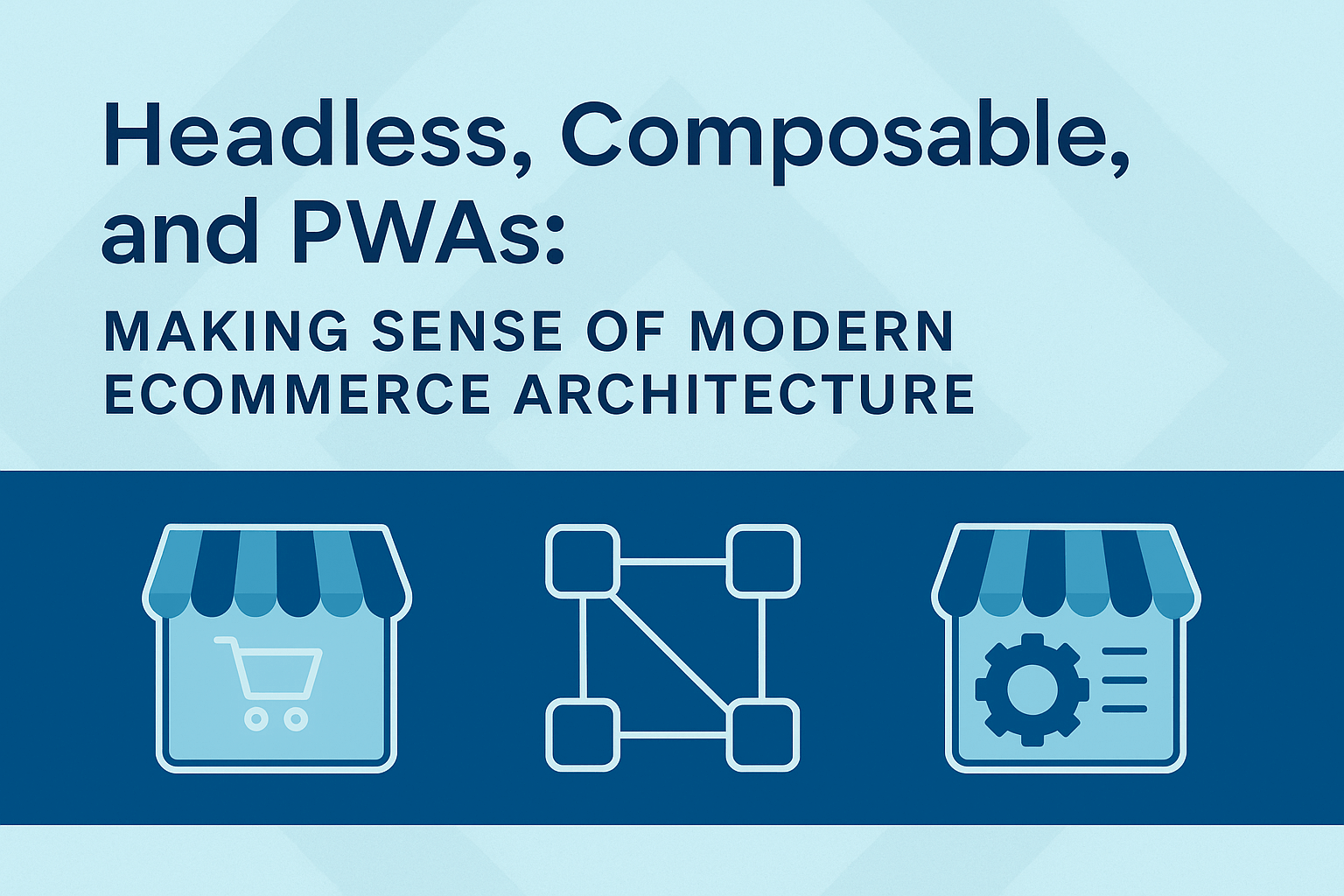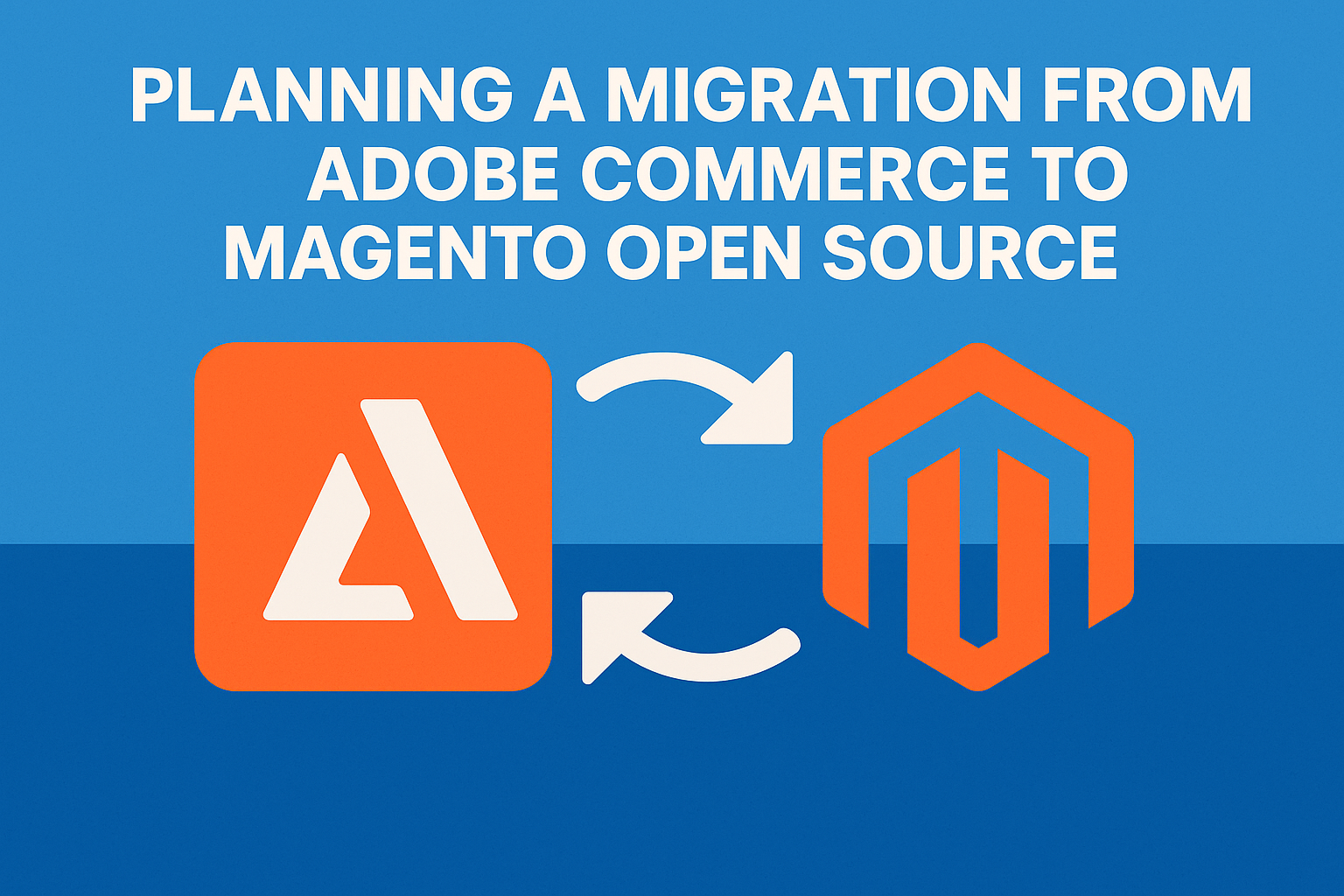What is Headless? A Chat with BigCommerce
The word “headless” is thrown around in the eCommerce world a lot. But what does it actually mean? Find out what it is and what it takes to achieve.
6 min read
 Tim Bucciarelli
:
November 11, 2025
Tim Bucciarelli
:
November 11, 2025

Table of Contents
The language around eCommerce architecture has become crowded and confusing. Terms like headless, composable, and PWA come up in almost every conversation, yet even among professionals they often mean different things. I’ll admit that even working in an agency that builds and supports eCommerce platforms every day, I’ve had to step back and make sense of this vocabulary myself. Doing that work has helped me give clients clearer recommendations and a more realistic sense of what each option actually involves.
A single platform can now operate in several ways. It might begin as a traditional all-in-one system, evolve into a headless setup with a separate front end, or grow into a fully composable architecture made up of many independent services. Each model has strengths, but each also brings new costs, staffing needs, and ongoing management considerations that deserve honest evaluation.
In this article, I’ll share what I’ve learned:
My goal isn’t to promote one model over another. It’s to provide perspective that helps you understand the real differences so you can decide what best fits your business, your team, and your long-term goals.
When people talk about modernizing eCommerce, the conversation often jumps straight to headless or composable. To understand those terms, it helps to start with the simpler concept of a monolithic platform.
A monolithic system keeps everything—catalog, checkout, content, and customer data—under one roof. Platforms like Magento Open Source, Adobe Commerce, Shopify, and BigCommerce all began this way. For many businesses, that unified structure is exactly what they need: one application, one team, and one environment to manage.
Headless architecture takes the first step away from that model. It separates the front-end presentation layer from the back-end commerce logic and connects the two through APIs. This makes it easier for marketing or design teams to update site layouts, launch campaigns, or build unique shopping experiences without having to modify the commerce engine itself. Development work shifts from template customization to API integration, allowing faster experimentation on the customer-facing side while keeping transactional systems stable.
Composable architecture goes a step further. Instead of relying on one platform to handle everything, it breaks commerce into independent services for product data, checkout, payments, content, and more, each connected through APIs. This gives teams freedom to choose the best solution for each need but also increases the complexity of integration, monitoring, and maintenance.
These models form a spectrum rather than fixed categories. The success of any approach depends less on the architecture itself and more on how well it fits the organization’s needs and capacity. The best results come when a business takes time to assess its functional requirements, available resources, technical skill sets, and long-term growth plans before choosing a direction.
Today, eCommerce platforms and architectures are closer in capability than ever before. What matters most is how well the chosen solution supports your business model and the people who run it. Having an experienced partner agency can make all the difference, both in guiding early decisions and in strengthening your internal teams to reach your eCommerce goals.
There isn’t a universal “best” architecture. Monolithic, headless, and composable systems each serve different priorities and demand different levels of technical maturity. The right choice depends on how your organization works, the resources you have, and how much control you want to maintain over time.
Monolithic: The Cohesive Workhorse
A monolithic platform keeps all major functions—catalog, checkout, CMS, and customer data—within a single system. It is essentially simpler to operate than headless or composable models because most features and updates happen in one place. That said, complexity can grow quickly. A heavily customized monolith with dozens of extensions or third-party integrations can become just as intricate as a multi-service architecture.
There are two main deployment models for monolithic systems:
In simple terms, SaaS trades control for convenience, while open source trades convenience for control. Each can be a strong choice depending on how your business operates and what level of ownership you want.
Progressive Web Apps, or PWAs, often appear in the same conversations as headless and composable commerce. While they share some of the same underlying technology, a PWA isn’t an architecture; it is a front-end approach focused on creating a faster, smoother shopping experience.
A PWA uses modern web capabilities to make a website behave more like a native mobile app. Pages load quickly, navigation feels instant, and repeat visits are faster because much of the content is cached in the browser. While PWAs can technically function with limited connectivity, that is not the main benefit for most retailers. The real value is in performance and reliability. Customers experience fewer interruptions and faster responses even on slower mobile networks.
In practice, PWAs appear in two forms:
It is worth noting that a PWA is not a content management system or a developer toolkit. It is simply a front-end experience layer. Some frameworks include SDK-like tools, but their purpose is to improve performance and usability, not to change how your team manages content.
For most businesses, adopting PWA principles can deliver meaningful gains in customer experience without requiring a full replatform. Whether the platform is monolithic, headless, or composable, a well-executed PWA front end can make the site feel faster, more modern, and more reliable on any device.
As eCommerce architectures become more modular, the way systems connect becomes just as important as the systems themselves. Software Development Kits, or SDKs, help bridge that gap by providing consistent, reusable tools for managing data and integrations between front-end and back-end systems.
An SDK is a set of utilities such as functions, models, and prebuilt connectors that simplify how developers interact with APIs. Instead of building each integration from scratch, developers can use an SDK to handle core operations such as product queries, cart updates, or checkout flows in a standardized way.
An SDK is not a standalone website or a replacement for a CMS. It is a set of developer tools that make it easier to connect your front end to a commerce platform or other services. If your platform already includes a built-in CMS, like Magento or Shopify, the SDK will not change how your content team manages pages. Where SDKs shine is in headless or composable builds where product data, content, and other services come from multiple sources and need to be displayed consistently in one interface.
SDKs do not eliminate complexity; they organize it. They create predictable patterns for development, testing, and maintenance across different systems. For a business, using an SDK can shorten development timelines, reduce integration costs, and make future platform changes less disruptive.
Quick Guide
Whether your architecture is monolithic, headless, or composable, the right SDK helps maintain consistency as your technology and customer experience evolve.
Modern eCommerce architecture offers more choice than ever, but with that choice comes complexity. It is easy to get caught up in the language of innovation—headless, composable, PWA-first—without stopping to ask what those terms mean for your business in practice.
Every model has its place. A monolithic platform offers stability and focus. Headless architecture allows faster experimentation and design freedom. Composable systems create long-term flexibility and the ability to evolve piece by piece. None of them are inherently better; they are simply different tools that fit different levels of organizational readiness.
The best outcomes come from honest assessment. Before investing in any new technology, take the time to understand how your team works today, where your bottlenecks are, and what kind of ownership you want over your systems. Modernization does not always mean replacing what you have. It might mean strengthening it with well-chosen integrations or headless components.
Working with an experienced partner can help you evaluate these options from both a technical and operational perspective. A good partner will not push a single solution but will help you identify the architecture that aligns with your goals, resources, and growth plans.
Technology evolves quickly, but clarity lasts. Understanding where you are today and planning your next steps with intention is the most reliable way to build an eCommerce foundation that will serve your business for years to come.

The word “headless” is thrown around in the eCommerce world a lot. But what does it actually mean? Find out what it is and what it takes to achieve.

PWA storefronts make Magento more adaptive, engaging, and accessible to consumers using mobile devices

Considering a move from Adobe Commerce to Magento Open Source? Learn how to plan your migration with a feature audit, data review, and roadmap to ensure a smooth transition.